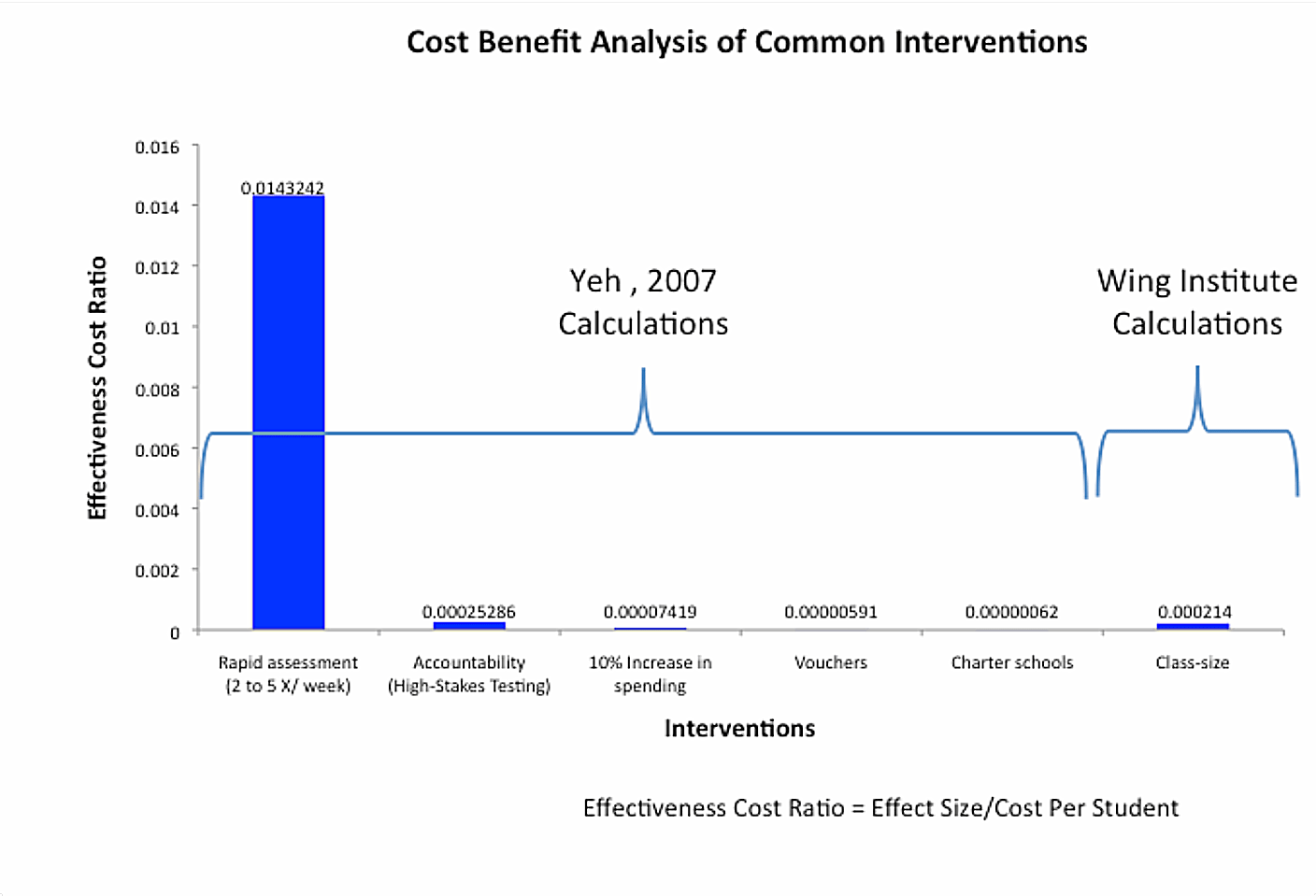How does class size reduction measure up to other common educational interventions in a cost-benefit analysis?
Why is this question important? Given the limited resources that are available for the education of children, it is important to select interventions that have the greatest impact we can afford. Using Stuart Yeh's effectiveness cost ratio formula, a rough comparison can be drawn comparing class size reduction with other educational interventions.
See further discussion below.

Source: The Cost-Effectiveness of Five Policies for Improving Student Achievement and The Wing Institute calculations of teacher costs and effect size taken from the STAR Project
Results: When class size reduction costs and size effects are plugged into the formula used in Yeh's 2007 study, class size has an effectiveness cost ratio similar to accountability. The class size effectiveness cost ratio is 0.000214 and Accountability ratio is 0.00025286. Both of these as well as the 10% additional spending, vouchers, and charter schools underperform in comparison with rapid assessment. By far, rapidly assessment is the most cost effective intervention for improving student performance. It should be noted the cost benefit analysis for class size reduction was calculated by The Wing Institute using data derived from Yeh's original study.
Implications: Educational researchers might begin to match effect sizes and costs of interventions in a standardized format designed to provide stakeholders and decision makers with a practical way to compare the value of potential interventions.
Authors: Stuart S. Yeh
Publisher: Sage Publications
Study Description: Yeh: See the Yeh study description for details on The Cost-Effectiveness of Five Policies for Improving Student Achievement
The Wing Institute: The Wing Institute used Yeh's formula (effect size/cost per student = effectiveness cost ratio) to establish an effectiveness cost ratio for class size reduction.
Effect size: 0.24875 was taken from the average effect size of K-3 from the STAR Project study.
Cost per student: The cost for the implementation is conservative and does not include additional supervision or facility costs. It was based solely on the cost of additional teachers. The cost of a teacher was based on the American Federation of Teachers (ATF) 2007 survey for a beginning teacher salary, $35,284. Benefits were based on the U.S. Department of Education calculations 2005-06 of total benefit costs at 37% of salary. The cost per student was based on the STAR Project's class sizes. An additional increase in teacher costs of 36% was determined by reducing class size from an average class of 24 to 15. Based on these costs and ratios, the cost per student was established at $1,123.
Definitions:
- Rapid assessment: Systems that provide nonjudgmental testing feedback regarding student performance in subjects such as math or reading two to five times per week and immediately after each test.
- Increased spending: 10% increase in per-pupil expenditure.
- Accountability: The use of high-stakes testing to hold schools accountable for improved student performance.
- Cost of an intervention: The value of the resources that are given up by society to implement the intervention, regardless of how those costs are reported by government entities. Note: Vouchers and charter schools were not defined in the study.
- Class size: A large class for the purposes of the STAR project was 22 to 26 and the reduced class size was 13 to 17.
Related Research:
Citation: Yeh, S. S. (2007). The Cost-Effectiveness of Five Policies for Improving Student Achievement, American Journal of Evaluation, 28(4), 416-436.
